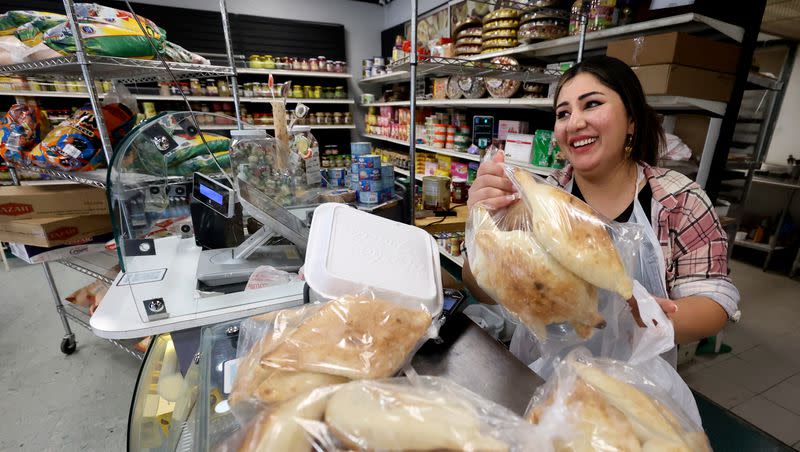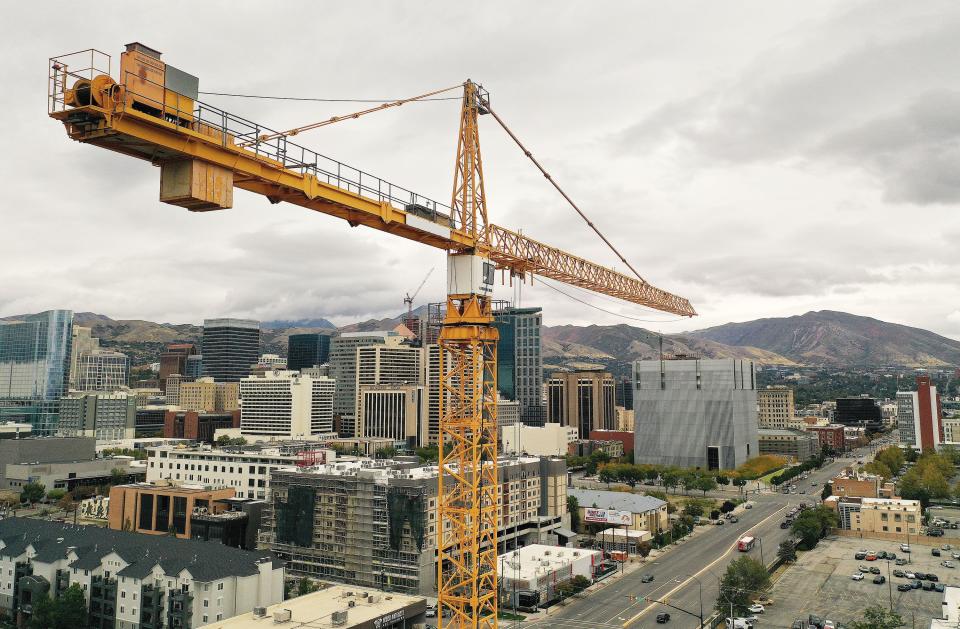The ‘New Utah’: Bigger, more diverse and economically mighty but facing unprecedented challenges

- Oops!Something went wrong.Please try again later.
Welcome to the “New Utah.”
Ahead of the COVID-19 outbreak, Utah was on an economic tear and carried that momentum forward, helping the state weather pandemic shutdowns, restrictions and fiscal challenges better than almost any other place in the country. In 2021, Utah was at or near the top of best performing states when it came to unemployment, job creation and economic growth.
On the backside of the global public health crisis, Utah finds itself in an ascended position, and a new report from the University of Utah’s Kem C. Gardner Policy Institute details both the state’s new, and enviable, bonafides alongside a slew of challenges that have risen alongside Utah’s high-flying performance.
Turns out Utah, measured through a statewide lens, is bigger, more diverse, more successful and older than it’s ever been. It’s also become dramatically less affordable, more congested, has a widening gap between the haves and the have-nots, and its nation-leading population growth, once fueled by the highest birthrate in the country, is now primarily a function of in-migration.
Related
‘The starter home in Utah is extinct’: How first-time homebuyers could get 20K for new homes
New report: ‘Equilibrium’ not in sight as Utah’s 2023 economic outlook remains hazy

In a monograph report released last month titled “The New Utah,” Gardner Institute analysts contrast the upsides of Utah’s ascension against the mounting challenges that have come along with that evolution and note state leaders will need to seek out new solution sets for a state that is fundamentally different than it was just a relatively short time ago.
“As keepers of the flame, Utahns entrust those in public service with the responsibility to keep Utah strong and flourishing,” report authors wrote. “Utah leaders’ response to and guidance of the New Utah will determine the state’s future success.”
Among Utah’s new status markers, the state now finds itself the 30th largest on a list that also includes the District of Columbia, jumping some four places since the 2010 census and on an arc that should ensure it will continue climbing the population ladder.
While that population growth has helped fuel the state’s economic engine, it is also pushing limits on infrastructure and accommodations, a factor easily recognized on Utah’s busy, and oft congested roadways. The influx has also helped skew the housing supply and demand metric, pushing average housing costs that were once comfortably in the affordable bracket to levels among the highest in the country and putting first-home ownership out of reach for an increasing percentage of residents.
“Population growth in Utah is not new,” the report reads. “What is new is a critical mass of people creating new opportunities and also bumping up against various constraints.
“Many ask how we can continue to grow and still maintain the attributes we love about Utah.”
In one of the biggest takeaways from an earlier, housing-focused report released in September, Gardner Institute experts predicted the state’s housing shortage is about to get worse. The national housing market correction underway now is likely to have lasting impacts on the Utah housing market by erasing recent years’ progress on closing the gap between the state’s growth and the number of new residential units being built.
That means the housing shortage is likely to persist for “the remainder of the decade,” researcher Dejan Eskic said at a panel hosted by the Kem C. Gardner Institute to discuss the report’s findings in September.
“Utah faces the most unaffordable market in its history,” Eskic said.
But under the same circumstances in which a critical Utah affordable housing debacle has arisen, the state’s economy has continued to rise and now finds itself among the most vibrant and high-functioning in the nation.
“We’re the fastest-growing state in the country,” Natalie Gochnour, associate dean at the University of Utah’s David Eccles School of Business and director of the Kem C. Gardner Policy Institute, said in an August interview with Utah Business Magazine. “We’ve been a leading economy but are now an elite economy that’s outperformed other states for the better part of 12 years, and we’ve entered a new, exciting demographic and economic environment as a state.”
Gardner researchers note in the New Utah report that the components of Utah’s population increases have changed dramatically in recent years. While internal growth, a factor that simply counts total births minus total deaths, was responsible for 66% of the state’s population increase from 2000-2020, with 34% coming from in-migration, that dynamic has flipped. From 2021-2022, in-migration accounted for 61% of new residents while 39% came from internal growth.
And Gardner experts predict that’s a dynamic likely to settle in as the new normal.
“We expect migration to outpace internal growth for the foreseeable future, even as it ebbs and flows in individual years,” the report reads. “The story here is Utah has both become a destination of choice for new migrants and now has significantly lower fertility rates.”
Utah’s population is also becoming markedly more diverse. While 9.5% of the state’s residents in 1990 were members of racial/ethnic minority groups, that percentage grew to over 23% in 2022. And, like Utah’s overall growth arc, researchers expect the minority share of Utah’s population to continue to increase.
One of the outcomes of Utah’s descending rate of internal growth is an aging overall population, according to the report. While the average age of Utahns came in at 24.3 years in 1980, that rose to 31.3 years by 2020 and will continue to rise for the “foreseeable future” according to Gardner researchers and lead to “even greater impacts in the coming decade.”
While rich with data reflecting Utah’s current status quo, on both the positive and negative sides of the balance sheet, Gardner researchers also offered some guidance for state leaders to navigate the challenges posed by the New Utah.
“The New Utah provides an opportunity for today’s leaders to lead change by setting direction, aligning resources and motivating action,” the report reads. “As they do this, we recommend a bold approach that prioritizes five actions.”
Those five actions include:
Keep an open mind — If you thought a policy approach was a good or bad idea five years ago, rethink your assumptions and consider trying something different.
Listen to all Utahns — The New Utah includes more perspectives than before. All voices matter.
Invest even more — Carefully evaluate the benefits and costs of current consumption in relation to future needs.
Fortify great institutions — The degradation of our associational life — families, schools, churches, government, and other forms of common life — requires social replenishment.
Dignify and unify — We can disagree over ideas, but we must respect every human being and offer dignity to everyone. We can unify behind common ideals.

